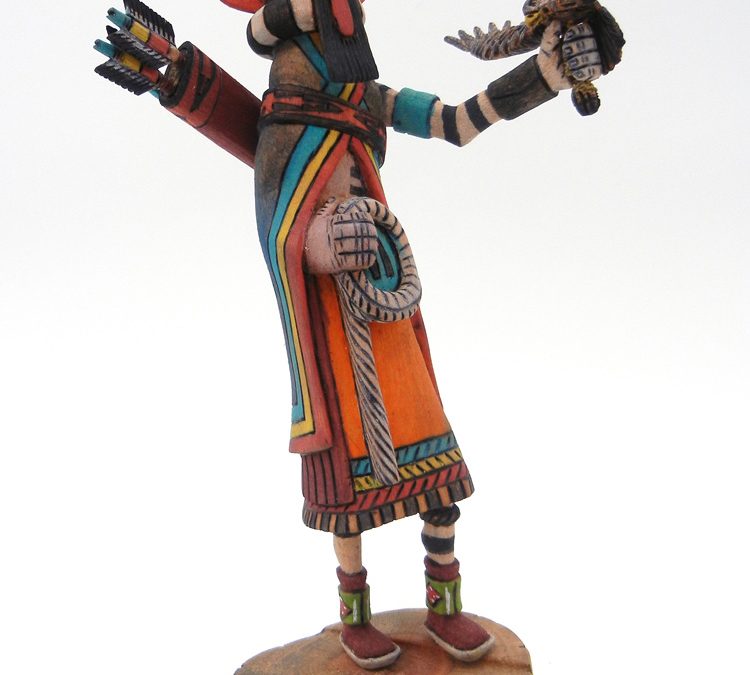The Hopi People are a community of Native Americans whose traditional territory is situated in what is now northeastern Arizona. While many aspects of traditional Hopi arts and culture are widely recognized, their long history of creating kachina dolls is particularly unique. These dolls are representations of katsina spirits, and the craftsmanship of these art pieces draws on the natural elements of the surrounding environment. Read on to learn more about kachina dolls, how they are made, and why they are such a beautiful part of the Hopi arts tradition.
Hopi Kachina Dolls – The term kachina, or katsina, is the name used for the many spirits which play an integral role in the everyday lives of the Hopi people. These spirits are said to influence things such as the weather, crops, fortune, and luck, and a variety of other elemental forces. Kachina dolls have long been used as an educational tool to teach young children about the different spirits and the surrounding forces they are connected to.
Traditional Wood – Similar to most Native American artforms, the kachina doll is traditionally constructed using materials commonly found in the surrounding environment. The wood that forms the foundation of the kachina doll is carved from the root of the cottonwood tree which can be found in abundance on the traditional territories of the Hopi.
Carving and Tools – A variety of tools are utilized to remove the bark of the cottonwood root, smooth it out and carve shapes and decorate elements into the wood. The tools most commonly used include handsaws, chisels, hammers, and knives. Traditionally, dolls are made of a singular piece of wood carved into the desired shape, unless the doll was particularly large, in which case additional adornments like headpieces were affixed to the main section after carving.
Finish and Decorative Elements – After the foundation of the doll has been carved, a finish is applied, and traditionally this would mean a full whitewash of kaolin clay which could be found locally. The doll was then often painted using natural pigments made from native minerals like hematite or manganese, or with vegetable dyes. Both wash and paint were commonly applied using a brush crafted from the yucca plant.
Palms Trading Company
Kachina dolls make a beautiful addition to any home and are a great way to support local artisans and learn more about Native American history and culture. If you’re interested in purchasing your own kachina doll, get in touch with us at Palms Trading Company. We have a wide variety of authentic Native American art and jewelry for you to choose from, and our professional staff will support you in finding the perfect piece. Get in touch today and let us help you find the perfect kachina doll!



